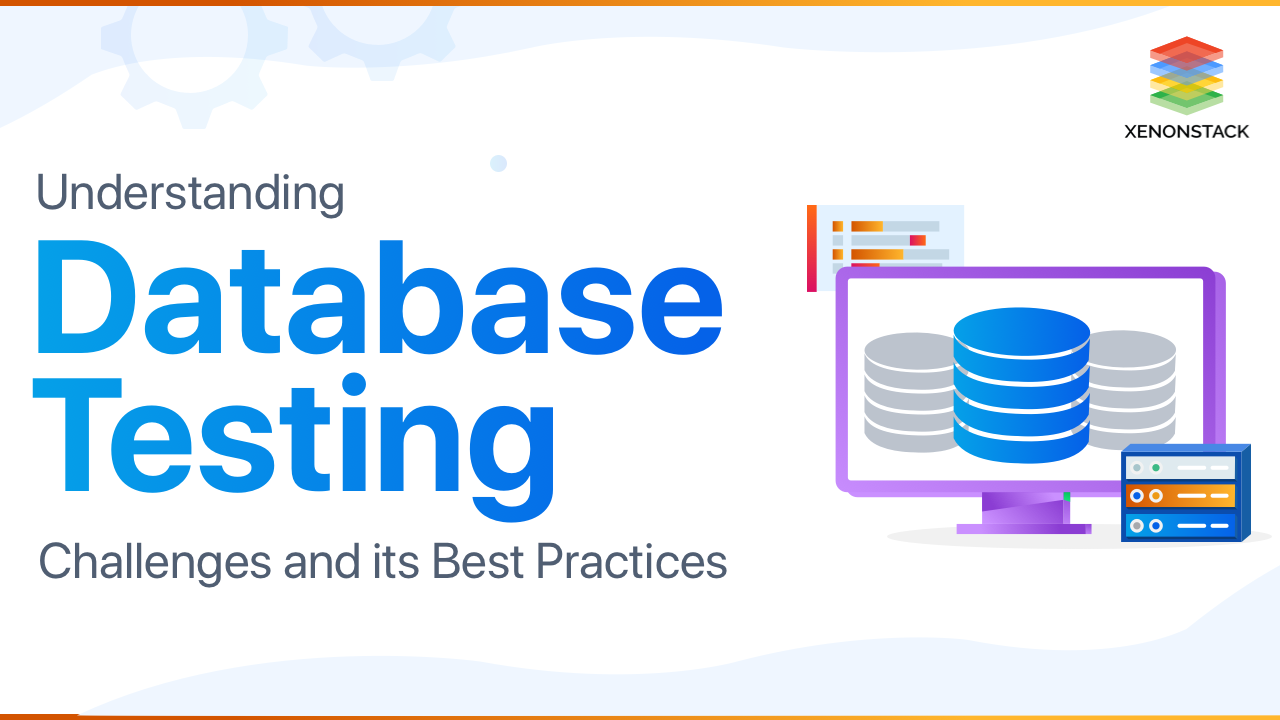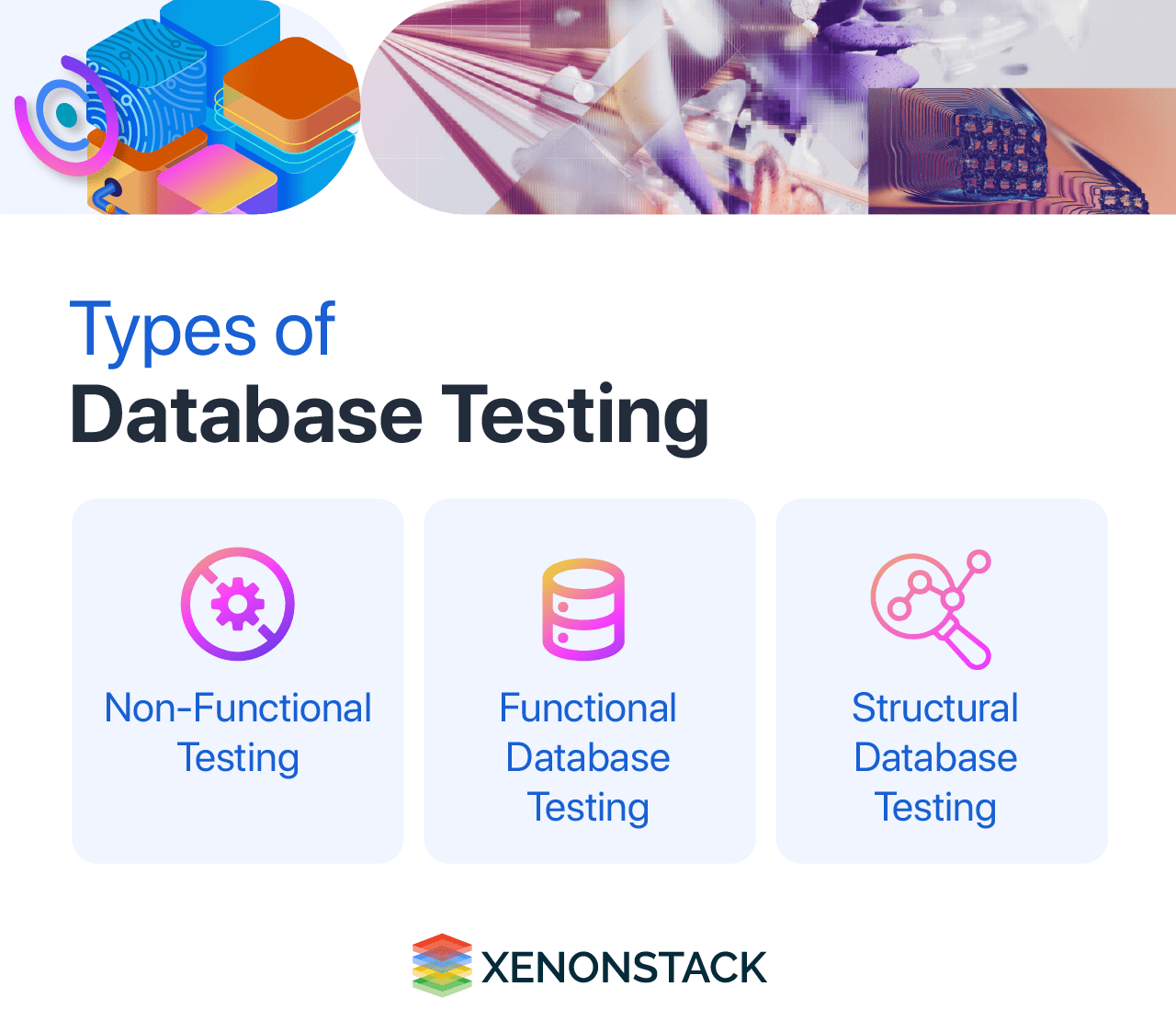
The database is an essential part of any system or application. Everything exists by data. If there is no data, nothing is possible. Its instability may cause the systems to behave unexpectedly. Either it crashes or the data is stored in an unorganized way; in both cases, the data will become useless. So, it helps us to find such vulnerabilities in a database system to protect it from an unstable state. Here are some components of database testing:
1. Database Schema
2. Transactions
3. Stored Procedures
4. Field Constraints
5. Triggers
What are the challenges faced by database testing?
The below highlighted the challenges of Database Testing:
1. Under Testing
DB testing requires an organized, well-planned approach. When the testing team doesn't have enough understanding, testing becomes lengthy and incomplete in terms of test coverage and the test data utilized.2. The Incomplete Scope of Testing
Under-qualified testing teams perform just black-box testing. They test the applications that depend on it by acting like real users; they test only through the user interface (UI). White-box testing provides an idea to test coverage but requires testers with excellent SQL skills. Those testers cost more, yet the cost is maintained, as SQL queries also work for testing triggers, procedures, and other critical database properties.
Inexperienced testing teams neglect to prioritize DB features regarding significance, which is essential to saving effort and time. They try to test everything, then lose time by testing minor pieces and leaving the significant parts under-tested.
3. Incomplete Test Data
The most common testing approach is to populate a database with limited false data. These data have nothing to do with the actual data, so the testing team can't recognize some flaws. When finally uncovering these issues, we must invest additional time and effort in debugging and retesting. It's possible to utilize realistic test data without exposing actual customer data. While you can't use the names of real people and companies, you can use postal codes and phone numbers specific to a target country. And that may help adequately address any front-end inconsistencies that users might experience.4. Price automation
The problem is that testing teams are unaware of the cost of tools. They use open-source tools, hoping to get a performing tool for nothing. These tools may provide rich functionality free of charge, but open-source tools may also lack the stability and convenience of commercial tools. You'll need to pay for better service, so if you decide to use a commercial tool, it's critical to calculate costs correctly. Doing that requires a good understanding of the project specifics and tool functionality.TDD is a software development process which includes test-first development. It means that the developer first writes a fully automated test case before writing the production code to fulfil that test and refactoring.
What are the best practices for database testing?
1. Read, Write, Trigger Tables - This involves reading, writing, insertion, updation, and deleting data to be processed. Triggering of tables consists of the Validation of modified records.2. Backup Tables - This includes Continuous Execution and backup of modified data followed by testing, including blockage of write tables.
3. Protect the Target Environment and determine which code is safe to deploy.
4. Availability of Database Administrators.
5. Test Environment Configuration.
6. Analyze the predicted needs of hardware, software, and resources.
7. Implement Scalability and Security of the schema.
8. Deliver small and frequent releases to determine issues and get instant feedback.
9. Tasks Automation.
10. Timely execution of scheduled jobs.
What are the types of database testing?

Sometimes, changes in DB and testing available limited copies of databases may also cause the system's failure; hence, the tester should ensure that extra copies of data are open while testing. While DB testing, it not only covers unit testing for it. Instead, it also includes many types of testing executed at a database.
1. Non-functional Testing
Non-functional training comprises load testing, stress testing, ensuring minimum system criteria are met to satisfy business specifications, risk identification, and performance optimization. Non-functional testing includes,
A. Security testing - This type of Testing identifies the system vulnerabilities, threats, and risks and prevents malicious attacks from intruders.
B. Stress testing evaluates the robustness and error-handling capabilities under harsh load conditions.
C. Volume testing - System performance is analyzed by increasing the volume of data in the database.
D. Load Testing - This test determines how it behaves while being accessed by multiple users simultaneously.
Further research on database testing.
2. Functional Database Testing
Functional testing is carried out from the end-user's perspective to determine if the necessary transactions and activities carried out by the end-users fulfill the business requirements. Functional Database Testing includes,
White box
A. Testing database triggers and logical viewsB. Validating data models and schema.
C. Checking referential integrity and consistency.
D. Use white box testing techniques such as statement coverage, decision coverage, and condition coverage.
Black Box
A. Data Mapping.B. Verifying stored and retrieved data.
C. Uses black box testing techniques such as equivalence partitioning and boundary value analysis.
3. Structural Database Testing
Structural database checking entails verifying all items within the data repository exclusively used for data collection and cannot be directly accessed by end users. In these tests, server validation is also a critical factor to remember. The testers must master SQL to complete this process successfully.
A. Schema / Mapping Testing - This entails using database object mapping to validate the objects of a front-end application.B. Stored Procedures Testing - This test ensures that the manual execution of the stored procedure and view generates desired results.
A wide range of NoSQL databases are available and developers can choose according to their requirement.
Testing on Multiple Databases
There are different kinds of databases available at which testing is possible. These are explained below -
1. Production - This database comes with live data; hence, testing cannot be performed in this data.
2. Local development - In local development, most of the testing is carried out.
3. Populated development - All developers share this database to run an application. This is used to check that our application can work with a large amount of data instead of testing only a few records present in a test. Ensures the application can work with a large amount of data.
4. Deployment - In this, the tests are run before deployment to make sure all the local database changes are applied to it.
Learn about how to manage multiple database testing.
Database Migrations
There is a need for its migration while doing database testing. DB migration allows for the following things -
1. Recreate the database from scratch.2. Clarify the state of the database.
3. Migrate from the current version of the database to a newer one.
How does it work?
1. Write test cases using Db Unit for a specific database supported by DbUnit.2. Specify a DbUnit test case for the project in a file named filename_test.go.
3. During the execution of test cases, actual and expected values are compared.
4. The result fails if the expected value after the execution of the development is not equal to the expected value.
5. The result succeeds if the expected value after the execution of the development is equal to the expected value.
Test Data Management (TDM) is a process or function that provides test data to automated tests in the right amounts, time, quality and format. It plays a critical role in the test life cycle.
How to adopt Database Testing?
In this demo, the actual result is checked with the expected result. The demo was built by the following things -
1. The database used: PostgreSQL2. The language used: GoLang
3. Automation for DB unit
Test cases for the database using the DB unit
1. In this, data present in it is checked; on a basis, if data comes after the execution of the query from the database is equal to an expected result.2. The result comes after the execution of the query compared with the actual result.
The following steps must be followed to test cases using the DB unit. These steps written below can be easily understood by looking at the flow mentioned above diagram.
3. Firstly, write test cases for a specific supported by a DB unit.4. Whenever test cases are written, then execute these test cases using a command discussed as follows.
5. After execution, the result comes as the pass and fail.
6. If a result is a pass, the actual result equals the expected result. If the status fails, then the actual result is not equal to the desired result.
Test cases can be run using the following command
Commands to Test DB Result for both cases either pass or fail shown below-
7. If expected and actual value matches each other, then a test case will move and the following result will be visible.8. If an expected and actual result is not equivalent, the test case will fail, and the effect will occur.
Graph Databases is “a database that uses graph architecture for semantic inquiry with nodes, edges, and properties to represent and store data.”
What are the best tools for Testing Database?
Some of the tools mentioned below help to execute these types of testing on a database.
1. Benchmark2. Rider
3. Db stress
4. DbUnit
5. DB Test Driven
6. HammerDB
7. JdbcSlim
8. JDBC (Java DataBase Delta Testing)
9. Nbi
10. NoSQLMap
11. NoSQLUnit
12. ruby-plsql-spec
13. Seite
14. sqlmap
15. tSQLt
16. Tsung
17. utPLSQL
Next Steps Towards Database Testing
To enhance database testing, prioritize the development of comprehensive testing strategies, including automated test scripts and regular performance evaluations. Additionally, implement continuous integration practices, utilize specialized testing tools, and ensure thorough documentation to identify issues early and maintain data integrity effectively.
.webp?width=1921&height=622&name=usecase-banner%20(1).webp)


